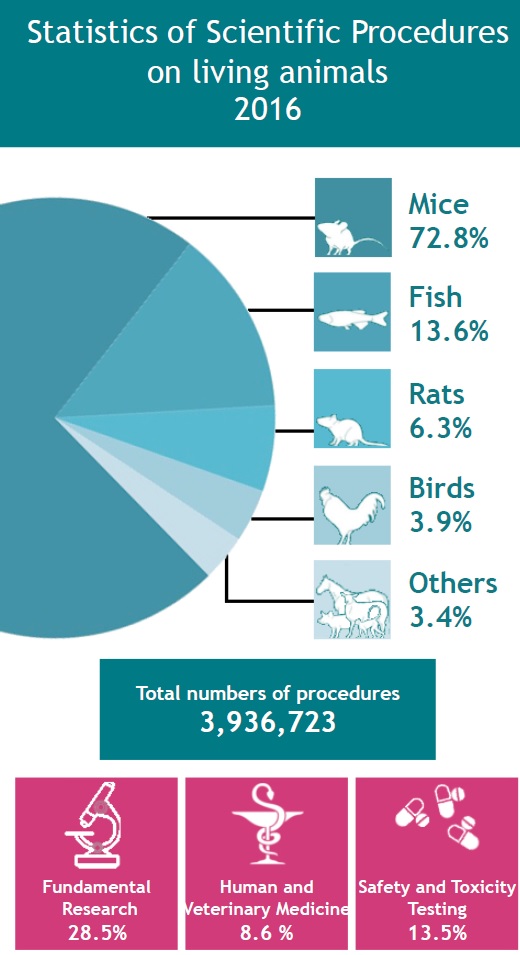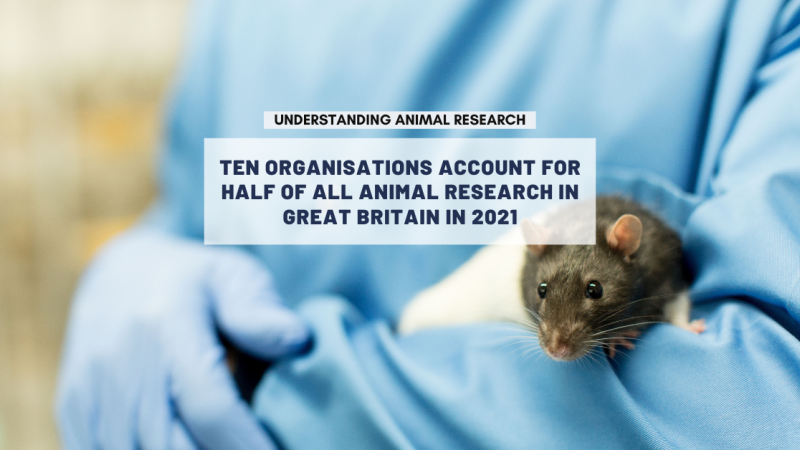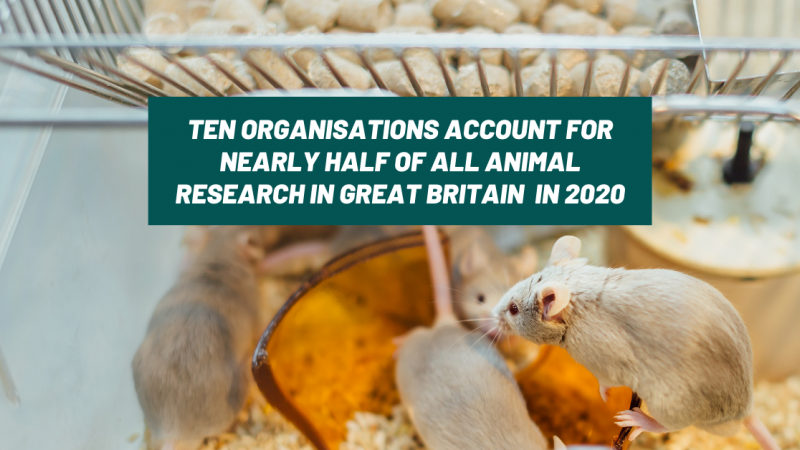Today the Home Office released statistics for the number of procedures using animals for scientific research in 2016. The number of procedures conducted on animals for medical, veterinary, scientific and environmental research in Great Britain was 3,936,723 in 2016. This is a decline of 5% when compared to the 2015 numbers.
There are many drivers for rises or falls in the number of procedures. For instance, if a university opens up a new facility breeding genetically manipulated (GM) mice, their numbers might be seen to go sharply upwards due to the large number of that species needed to conduct research. Similarly, some of the institutions with the highest numbers are those that only use fish with some of the lowest being those which use primates. Generally speaking, a rise in numbers can be attributed either to investment in UK bioscience rather than other countries or the development of new avenues of research. In recent years, for instance, the breeding of GM animals (mainly mice) which undergo no further procedures has increased to around half (48.6%) of experiments, masking a decline in other sorts of research.

Who does experiments?
Universities and medical schools are the greatest users of research animals, conducting 49.2% of the total number of procedures. Commercial organisations are next, with 25.3%. Government departments, public bodies, NHS hospitals and public health labs conduct around 12.3% with the remaining 13.2% conducted by non-profits like charities.
A third of these procedures were carried out by ten universities.
Which species are most used?
The most common types of animals used in procedures are mice (72.8%), fish (13.6%), rats (6.3%), and birds (3.9%). These four constitute 96.6% of research procedures.
Number of procedures carried out by the most commonly used species
|
|
2015 |
2016 |
Rise or fall? |
|
Mice |
3,038,167 |
2,866,435 |
↓ |
|
Fish |
561,424 |
535,819 |
↓ |
|
Rats |
268,522 |
249,389 |
↓ |
|
Birds |
141,425 |
151,403 |
↑ |
Number of procedures carried out by specially protected species
|
|
2015 |
2016 |
Rise or fall? |
|
Dogs |
4,643 |
4,932 |
↑ |
|
Cats |
209 |
190 |
↓ |
|
Primates |
3.612 |
3,569 |
↓ |
|
Equidae (horses) |
8,356 |
8,948 |
↑ |
These ‘special protections’ are that scientists must demonstrate why another species cannot be used instead.
Actual suffering
As well as estimating the suffering likely to be encountered in experiments in order to get a licence, researchers also record the suffering that is actually experienced. Procedures in both cases are organised into five categories: mild, moderate, severe, non-recovery or beneath the threshold for suffering. A mild procedure may be something like a blood draw, a medium procedure might be something which requires recovery like minor surgery, a severe procedure might be something which causes severe physical or mental suffering like a forced swim and non-recovery procedures are those where the animal is put under general anaesthetic and never woken up.
The actual suffering in each category in 2016 was:
|
Category |
2015 |
2016 |
Rise or fall? |
|
Sub-threshold |
33.7% |
38.4% |
↑ |
|
Mild |
45.1% |
37.7% |
↓ |
|
Moderate |
13.7% |
16.0% |
↑ |
|
Severe |
4.5% |
3.9% |
↓ |
|
Non-recovery |
3.1% |
4.0% |
↑ |
What is the purpose of this research?
|
Creation and breeding of genetically manipulated animals (mainly mice) |
1,914,040 |
48.6% |
|
Basic research into how biological systems work |
1,121,354 |
28.5% |
|
Regulatory testing |
531,509 |
13.5% |
|
Research that translates from animal to human |
340,517 |
8.6% |
|
Protection of the natural environment |
26,076 |
0.7% |
|
Preservation of animal species |
1,789 |
0.0.% |
|
Higher education or training |
1,438 |
0.0.% |
Can I learn more?
Yes, every experiment is published on the Home Office website in plain English. https://www.gov.uk/government/collections/non-technical-summaries-granted-in-2016
The statistics released today are available on their own page https://www.gov.uk/government/statistics/statistics-of-scientific-procedures-on-living-animals-great-britain-2016
The regulation of animal experiments has its own page https://www.gov.uk/guidance/research-and-testing-using-animals
Understanding Animal Research has a wealth of information on the specifics and context of experiments.
Animals cannot be used if there is an alternative. Animals are not used to test cosmetics or tobacco. Animals can be used to test industrial chemicals, which may or may not appear in household cleaners. However, it is illegal to test finished household cleaning products.
Last edited: 16 August 2022 10:00




